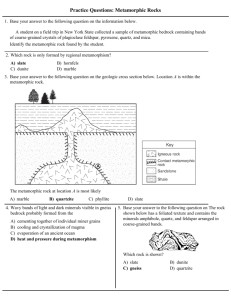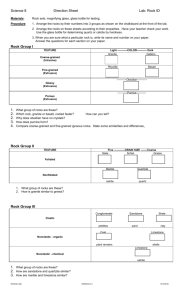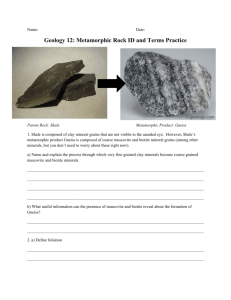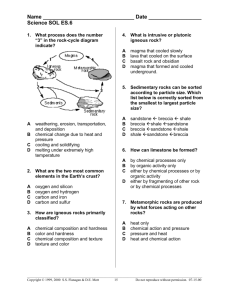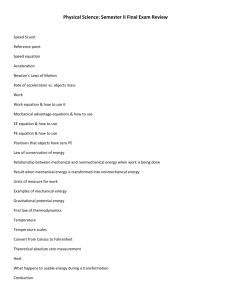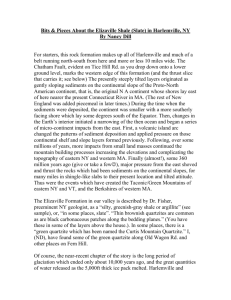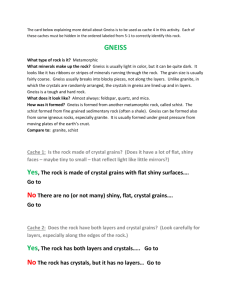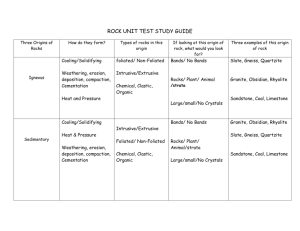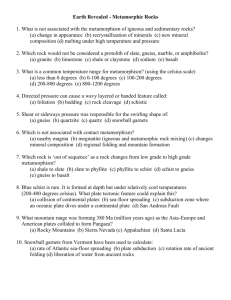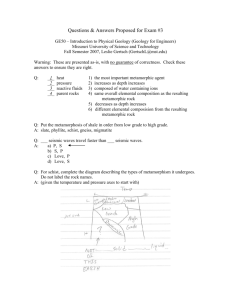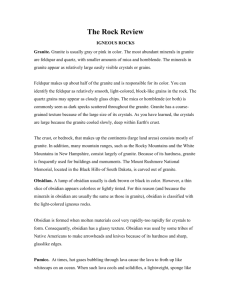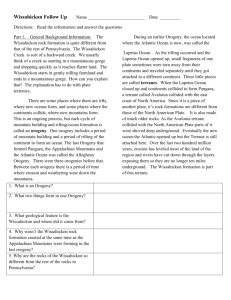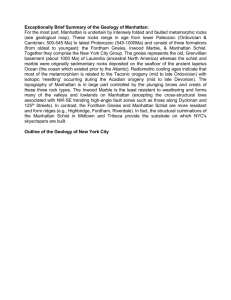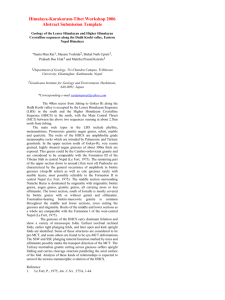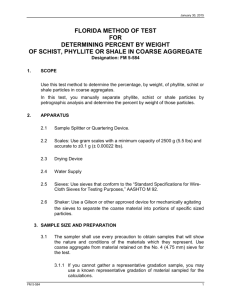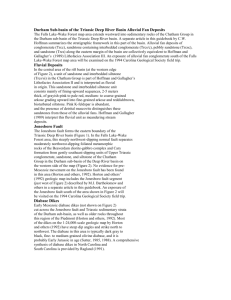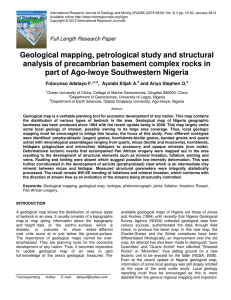Rock Types (Sid, Ig, Met ) notes. domenico
advertisement
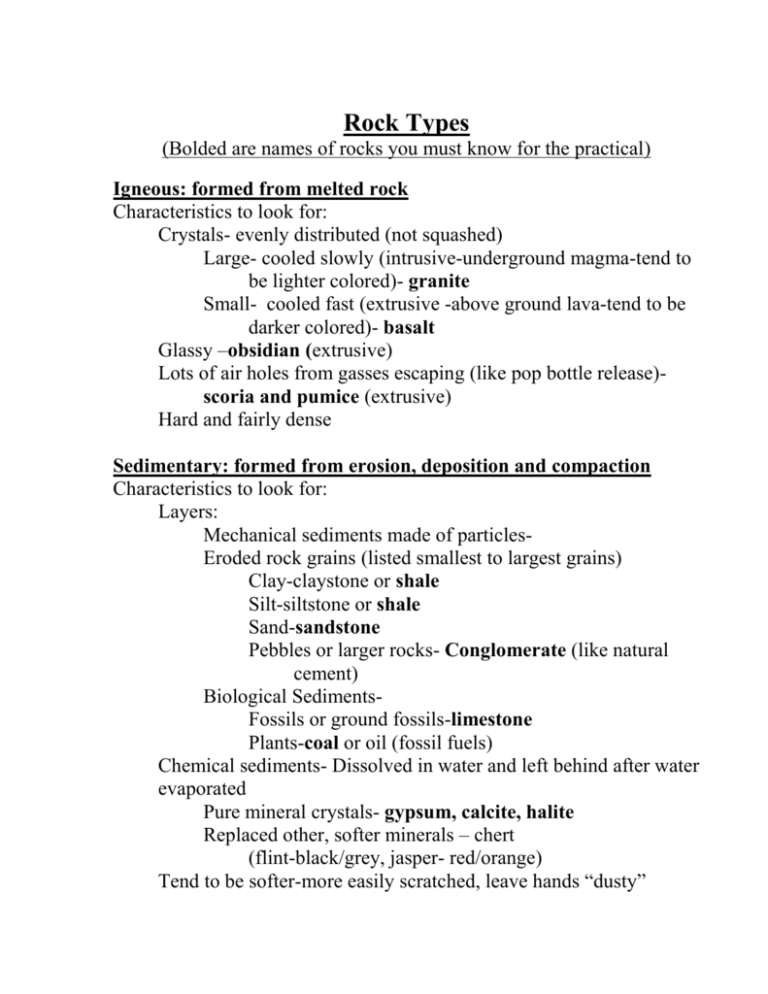
Rock Types (Bolded are names of rocks you must know for the practical) Igneous: formed from melted rock Characteristics to look for: Crystals- evenly distributed (not squashed) Large- cooled slowly (intrusive-underground magma-tend to be lighter colored)- granite Small- cooled fast (extrusive -above ground lava-tend to be darker colored)- basalt Glassy –obsidian (extrusive) Lots of air holes from gasses escaping (like pop bottle release)scoria and pumice (extrusive) Hard and fairly dense Sedimentary: formed from erosion, deposition and compaction Characteristics to look for: Layers: Mechanical sediments made of particlesEroded rock grains (listed smallest to largest grains) Clay-claystone or shale Silt-siltstone or shale Sand-sandstone Pebbles or larger rocks- Conglomerate (like natural cement) Biological SedimentsFossils or ground fossils-limestone Plants-coal or oil (fossil fuels) Chemical sediments- Dissolved in water and left behind after water evaporated Pure mineral crystals- gypsum, calcite, halite Replaced other, softer minerals – chert (flint-black/grey, jasper- red/orange) Tend to be softer-more easily scratched, leave hands “dusty” Tend to be Less dense rocks Layers Not usually Glittery Metamorphic : Formed From Heat and pressure Characteristics to look for: “zebra stripe” banding (light and dark due to “crunchy peanut butter” effect- some minerals are softer than others)Gneiss (pronounced “nice”) “Glittery” layers – Gneiss or Schist Cracked, ‘Glazed donut”- Quartzite More dense and harder than sedimentary rocks Fused layers (has a sheen) - Slate Squashed crystals-glitter Gneiss or Schist Folding or twisting of layers or bands (evidence of pressure) Rock type Becomes Shale Sandstone or quartz Granite Mica or basalt Limestone Metamorphic type Slate Quartzite Gneiss Schist Marble Note: Fossil shells, limestone and marble are all made of CaCO3 (Calcium Carbonate) and will bubble or fizz when acid is applied.



